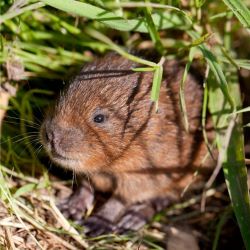
Save Water to Save our Chilterns Chalk Streams!
by Chilterns Chalk Streams Project
Did you know that in the Chilterns, we have the highest per capita domestic water use in the UK? Water Saving Week 2022 ran from 23rd to 30th May. The River Chess Smarter Water Catchment Project team put together a series of social media posts flagging up why saving water makes such a difference to our nine, rare and special Chilterns Chalk Streams and their habitats. Here is a summary of those tips.
Chalk Streams: 'England's Rainforests'
Chilterns chalk streams are amongst the UK’s most threatened habitats. Why are they under threat from our water use?
- Chalk streams have suffered from chronic low flows due to abstraction for public water supply and the impacts of climate change, for well over half a century.
- Low water flows are one of the biggest threats to biodiversity within the Chess, affecting its fish populations, invertebrates, plants and mammals.
- Low flows can be caused by natural drought conditions. However, if we abstract (pump out) too much water from the aquifer, this can also cause reduced flows and even result in rivers drying up.

A dry stretch of the River Ver during a period of low flows
- Since the 1970’s the frequency of droughts and our demand for water has increased.
- The 2019 drought saw some of the lowest flows across the nine Chilterns Chalk Streams and by September of that year 67% of the total length of chalk stream habitat in the Chilterns AONB was dry.
- Over the last 5 years both Affinity Water and Thames Water have reduced abstraction at sites in the Ver, Gade, Chess, Misbourne, Wye and Hughenden valleys as part of their sustainability reductions programme.
- Water companies and the Environment Agency are monitoring flows in these rivers in an effort to track the impact this change may be having.
It is our responsibility as a society to ensure we are working towards being more sustainable with our water use to ensure dry rivers are not considered the norm and that future generations are able to enjoy chalk streams that are healthy and vibrant with abundant flows.

How can I help save water?
Climate change is changing the patterns and predictability of our UK rainfall. We’re seeing more intense rainfall and longer periods without rainfall. There is a greater risk of severe flooding and droughts.
You can be a water saving hero & alleviate the effects of droughts!
- Install a water butt to collect rain water – use this to water your garden.
- Rain water is untreated – it doesn’t cost you a penny!
- Use a watering can instead of a a hose – this dramatically decreases your garden water consumption.
- Affinity Water offers the chance to receive a subsidised water butt direct from their website.




A water footprint is the sum of water consumed by a particular entity within a given time period.
- Water use can be divided into direct and indirect uses. Direct water is the water that we drink, wash our hands, take a shower, jump in a pool or any daily use you may think of. Direct water use is fairly easy to track, especially if you install a water metre.
- However, indirect water is a hidden flow imbedded in food or commodities. Water is needed to produce these different goods and services. We don’t see this water it is ‘invisible’ by the time we received the end product, but still makes up part of our water footprint.
- Our behaviour, decisions and demand, drive and influence the distribution of water resource and water pollution. Every small change as an individual you can make to use water more sustainably contributes to a bigger picture.
- Almond milk is the least sustainable milk alternative out there. Perhaps consider trying oat milk which uses 48L of water to produce, significantly less!
- Beef productions requires an impressively large quantity of water to produce. Perhaps consider trying to go meat free at least one day a week.
- Clothing production is one of the most wasteful water intensive production processes. Fast fashion is one of the biggest consumers of water. Perhaps consider buying clothes second hand or choosing clothing with recycled fibres.
This is a call to action, your choices could help save water and in turn help save our streams. You can always be water wise no matter what the weather brings.

The Chess Smarter Water Catchment Initiative
The River Chess Smarter Water Catchment project is delivered by a number of stakeholders all working collectively towards the same goals of protecting the River Chess.
By tackling multiple pressures and problems simulations across the catchment of the River Chess, the Smarter Water Catchment partnership is aiming to do and achieve more for nature and local people over the next year 10 years.
Related news
Revitalising the Hamble Brook
For the first time in more than 140 years, the Hamble Brook has a new wetland site.
The Charming Chess Valley
A chalk stream, far-reaching valley views, a tucked-away Manor House and the mewing of red kites for company on this circular Chess Valley walk.
Earth Trust launches Growing Places project with Mend the Gap funding
We’re delighted to be supporting the Earth Trust to work with Oxfordshire employment charity ‘Aspire’, on a project to bring...







